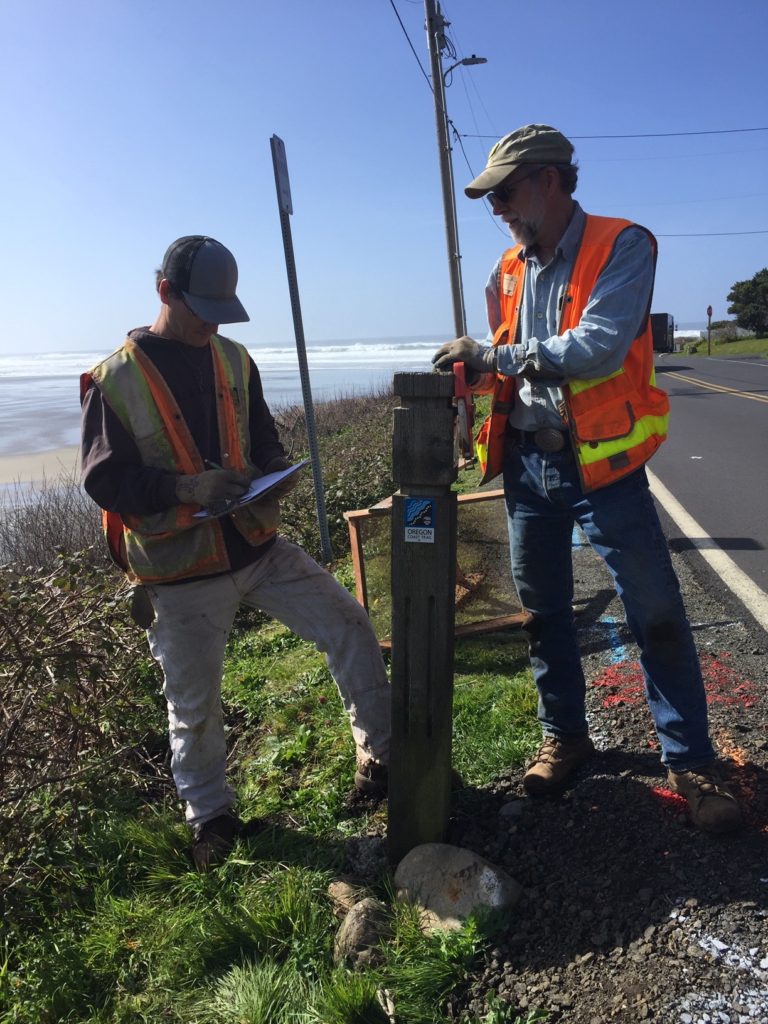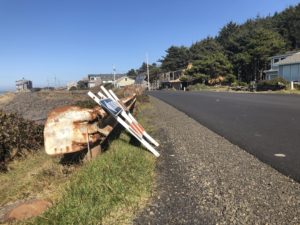
Lincoln County’s plans to finish work on Ocean View Drive and turn it over to the city of Yachats are finally moving forward again.
The reconstruction project has been stalled since Ocean View Drive was paved last fall while the county waited for a state-approved archeologist to examine portions of the road’s shoulders for Native American artifacts.
Areas along the Yachats River and north of Yachats State Park were once covered by shell mounds left by Native Americans who for centuries camped along the coastline near Yachats during the summer and fall to hunt, fish for salmon and gather shell fish. Most of the mounds were leveled in the 1930s and used as the base for the construction of U.S. Highway 101.
Construction projects which could possibly disturb any remaining artifacts must be tested by an archeologist approved by the state, in this case Oregon State Parks and Recreation. But because of parks’ staff turnover, hiring an archeologist to test the shoulders of Ocean View Drive where the city may construct a boardwalk and where the county wants to install new guardrails has taken months.
The delay has frustrated city and county officials, who want to complete the $250,000 reconstruction of Ocean View Drive and hand ownership over to Yachats. The road agreement has been years in the making.

On Wednesday, UO archeologist Tom Connolly and graduate student Kaylon McAlister dug 30-inch deep test holes along Ocean View Drive where it overlooks the Yachats River and sifted the dirt and gravel for Native American artifacts. Lincoln County public works supervisor Roy Kinion said they a few shell fragments but nothing significant.
They tested the east portion of Ocean View Drive because the city of Yachats is contemplating a project to build a boardwalk along the 804 Trail overlooking the Yachats River.
Next month Kinion said Connolly will return with a larger team to test the edge of Ocean View Drive north of the state park. Before it hands ownership over to the city, the county has to remove the deteriorating guardrails and place new ones at the edge of the new pavement.
The county’s contract with the UO for the archeological study is for $19,937.
Kinion said Wednesday he was glad to finally see the project moving again.
“The only frustration is that has taken so much time,” he said. “But we’re going to get it done.”


